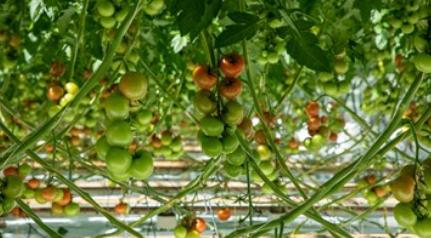Salinity, drought, and flooding are common environmental stresses that negatively impact plant growth, development, and productivity. When subjected to abiotic stress, plants initiate a cascade of physiological and biochemical responses that help them tolerate or evade stress. One of these responses is the production of the plant hormone ethylene, which is involved in adaptation processes toward abiotic stress. For example, ethylene can reduce plant growth through metabolic adaptations and redirect resources to survive during stress periods. Ethylene can also induce morphological changes by promoting adventitious root formation, regulating stem and petiole growth, and controlling stomatal aperture, which leads to a change in physiology to cope with stress. Furthermore, ethylene signaling can activate genes that help to resist and tolerate stress, such as genes involved in antioxidant production, osmoprotectants, and other stress-related proteins.
Studies have shown that exposing plants to gentle abiotic stress or a chemical signaling molecule can prime them, enhancing their ability to respond more effectively and rapidly to a severe abiotic stressor. This process, called priming or sensitization, has shown great promise in enhancing tolerance to different abiotic stresses, such as salinity. Given that ethylene plays a prominent role in regulating plant adaptation to abiotic stress, it is reasonable to assume that pretreatment with ethylene could prime plants to better cope with future stressors, enhancing their ability to withstand the negative effects of, for example, salinity, drought, and waterlogging.
During drought stress, ethylene and other hormones (usually abscisic acid [ABA]) can increase the survival of plants. A study by Zhang et al. (2009) showed that transgenic tobacco expressing the drought- and ethylene-inducible soybean GmERF3 gene exhibited higher tolerance to drought stress due to a higher proline and soluble sugar accumulation. Similarly, Scarpeci et al. (2017) showed that overexpressing AtERF019 in Arabidopsis increased drought tolerance and decreased transpiration rate by reducing stomatal conductance. In a study by Zhang et al. (2021), an ethephon (a liquid formulation that releases ethylene gas after spraying) pre-treatment was administered to Kentucky bluegrass (Poa pratensis L.), which subsequently led to an osmotic enhancement when exposed to drought stress by promoting antioxidant enzyme activity and the accumulation of proline. Similarly, priming wheat grains with ethylene has been shown to elicit improved drought tolerance by regulating auxin and abscisic acid signaling, ROS scavenging, and osmotic regulation.
When plants are submerged or waterlogged, gas exchange is severely restricted leading to a reduction in oxygen, also known as hypoxia. Due to the low diffusion of ethylene from the flooded organs to the floodwater, ethylene gets entrapped and accumulates within the plant tissue, triggering a cascade of adaptive morphological and anatomical flood responses such as epinasty or hyponasty, stem and internode elongation, and the development of adventitious roots and aerenchyma. Furthermore, ethylene was shown to enhance the stability of transcription factors ERFVII (Group VII ethylene response factors), which regulate hypoxia responses by controlling hypoxia-responsive gene expression. Recently, it was reported that an ethylene pretreatment of only 4 h can effectively increase the survival of Arabidopsis root meristems when subsequently exposed to hypoxic conditions, mediated by NO and ROS scavenging. Moreover, it was revealed that ethylene is involved in the hypoxia acclimation responses in bittersweet and waterlogging-tolerant potato cultivars. However, ethylene does not play a similar role in tomato plants and the roots of waterlogging-sensitive potato cultivars.
Real-time transpiration and CO2 assimilation rates and the impact on biomass during and after 3 days of abiotic stress were measured. Results of the study showed that an ethylene pretreatment of 1 ppm for 4 h did not significantly influence the negative effects of waterlogging stress, while plants were more sensitive to salt stress as reflected by enhanced water losses due to a higher transpiration rate. However, when exposed to drought stress, an ethylene pretreatment resulted in reduced transpiration rates, reducing water loss during drought stress. Overall, findings indicate that pretreating tomato plants with ethylene can potentially regulate their responses during the forthcoming stress period, but optimization of the ethylene pre-treatment duration, timing, and dose is needed. Furthermore, it remains tested if the effect is related to the stress duration and severity and whether an ethylene pretreatment has a net positive or negative effect on plant vigor during stress recovery. Further investigations are needed to elucidate the mode of action of how ethylene priming impacts subsequent stress responses.
Reference: Mohorović, P., Geldhof, B., Holsteens, K., Rinia, M., Ceusters, J., & Van de Poel, B. (2023). Effect of ethylene pretreatment on tomato plant responses to salt, drought, and waterlogging stress. Plant Direct, 7(11), e548. https://doi.org/10.1002/pld3.548











